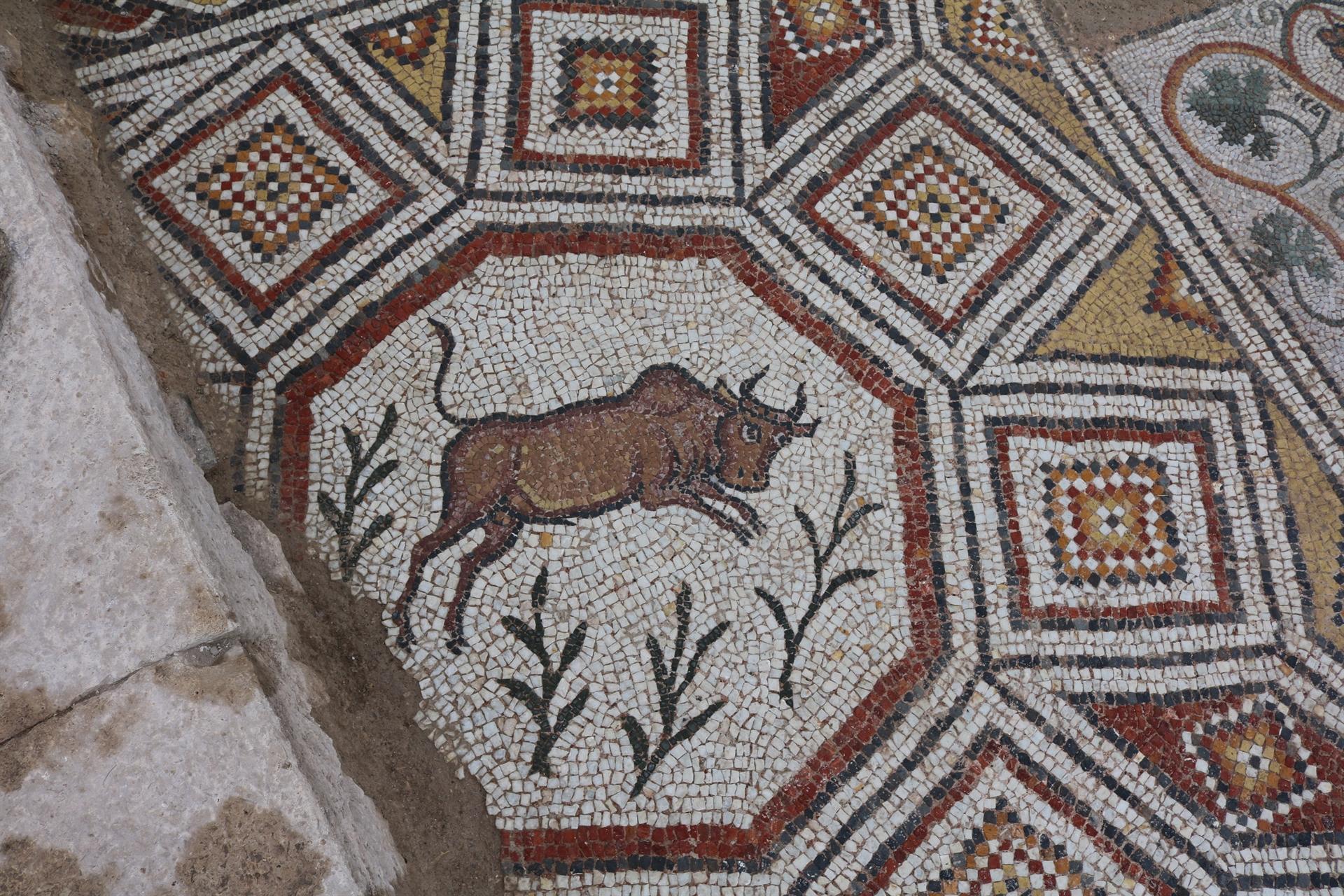
The ancient city of Hadrianopolis, which is believed to have been founded in the 1st century B. C. and was used as a settlement until the 8th century A.D., will from now on be renowned with its mosaics, Karabük University Archeology Department member Ersin Çelikbaş has said.
A meeting was held on Dec. 16 on the works carried out in 2021 in the ancient city, located in the Eskipazar district of the northern province of Karabük and called the “Zeugma of the Black Sea.”
Çelikbaş stated that they will complete their work for 2021 on Dec. 31 and the new season’s works will start in January 2022.
Çelikbaş said they completed the infrastructure works that will enable the visitors to come to Hadrianouolis.
“Therefore, when visitors come to Hadrianopolis, they will come to a mosaic city. They will see mosaics, one of the most important branches of art of the ancient period, and get to know Hadrianopolis with these mosaics,” he added.
Noting that they will carry out excavations at many different points of the ancient city in 2022, Çelikbaş said they will create very important exhibition areas, structures and important architectural works on Hadrianopolis.
Speaking about the works carried out this year, he said, “Among the architectural remains, the fountain structure that we uncovered last month makes us happy the most. The tub and pool of the fountain are still intact. When we uncovered it, we were very surprised to see that a really solid fountain still survived. After restoring it, we will activate it again. The other is the Roman Empire military base. Numerous finds belonging to Roman soldiers were found inside. War tools, cutting tools, objects used in social life, and most importantly, an armor and mask were unearthed. We knew about the existence of the Roman Empire here, but we did not know that this was a base built for protection purposes.”
Çelikbaş added that the excavations continue to shed light on the history of Hadrianopolis, Eskipazar, Karabük and the Western Black Sea Region.
Hadrianapolis’ remains
Excavation works in Hadrianapolis started in 2003 and have been continuing with intervals.
Archaeological surface surveys have uncovered 14 public buildings and other structures in the ancient city of Hadrianopolis so far.
Among these public buildings are two baths, two churches, a defense structure, rock tombs, a theater, an arched and domed structure, a monumental cultic niche, walls, a villa, other monumental buildings, and some religious buildings.
The church floors are decorated with mosaics and have images of the rivers of Geon, Phison, Tigris and Euphrates imprinted on them, which are mentioned in the Bible.
Besides, various animals, such as horses, bulls, elephants, panthers, deer, and peacocks, are also depicted in the mosaics of the ancient city, which bear resemblance with the world famous ancient city of Zeugma in the southeastern province of Gaziantep.